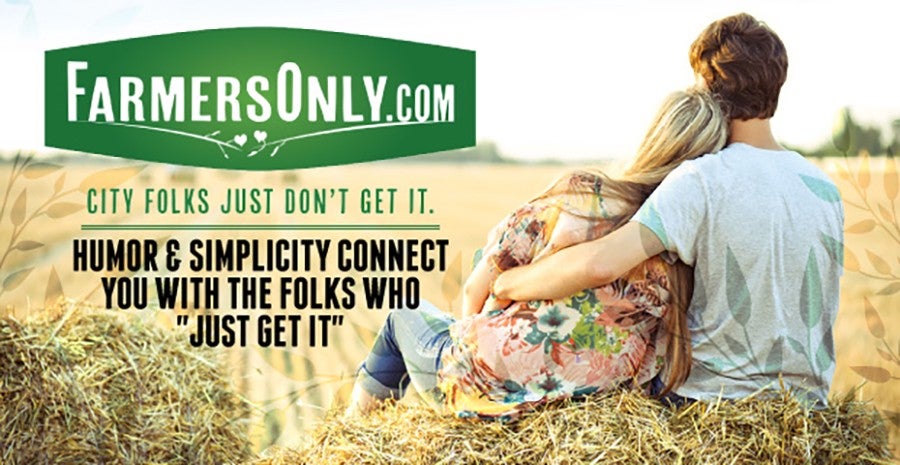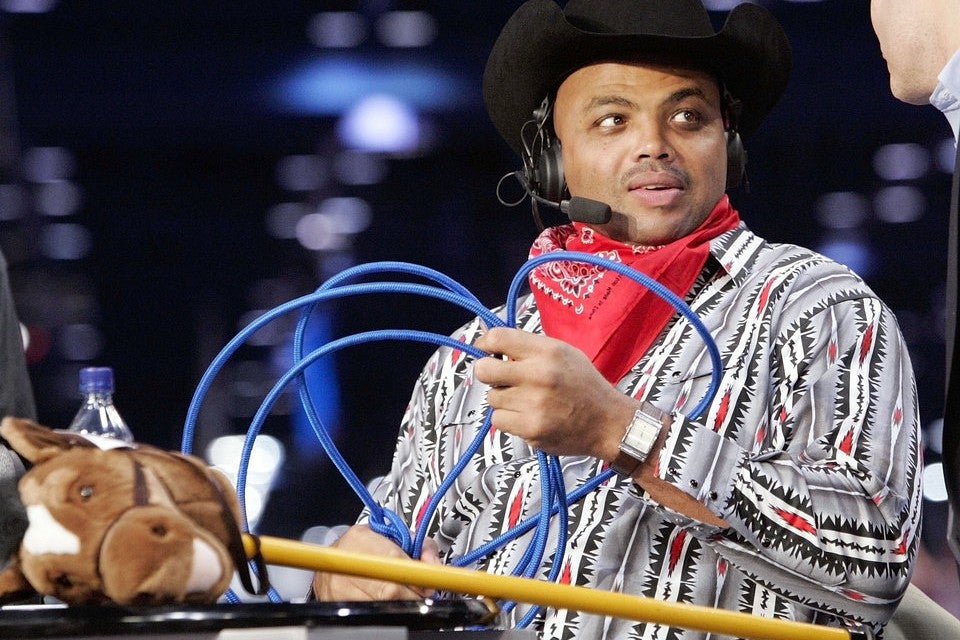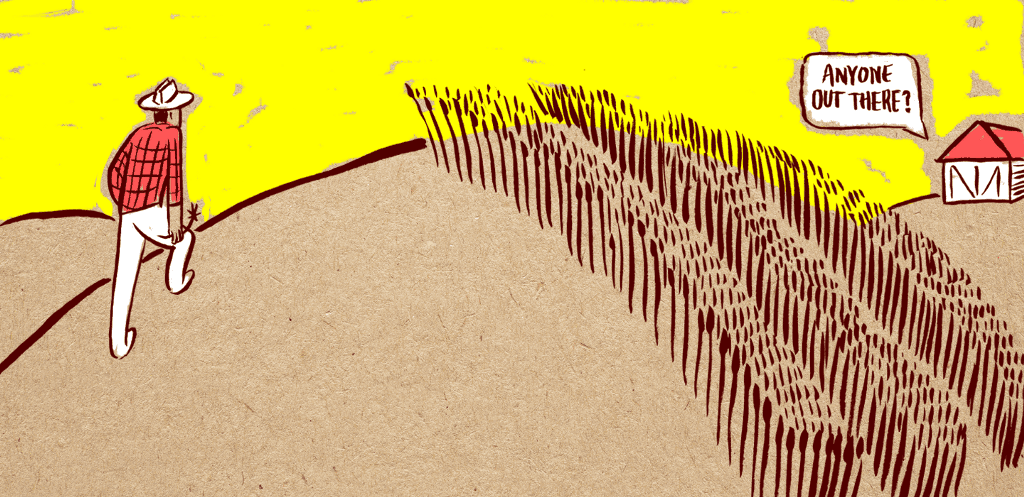There’s a woman I know of on the other side of the prairie named Pepper Werner. I know her through email only, and she knows her husband, a man named Matt, because of the dating site FarmersOnly.com. “As part of my doctoral program, I took a teaching contract in Montana in a community of 200 people at a one-room schoolhouse,” writes Pepper, from the cattle ranch she runs mostly by herself. “As you can imagine, loneliness quickly set in. I’d never tried FarmersOnly before, but I decided to give it a shot. My first day on the site was my future husband’s last. We seemed to have a lot in common and talked by phone for hours. The only hangup? I lived in remote central Montana, and he lived an 11-hour drive away in Nebraska.”
Eventually, though, they decided their relationship was worth more than the things keeping them apart, and Werner moved to a part of Nebraska that’s difficult to find even by GPS. “Today is actually our two-year wedding anniversary,” she writes to me back in November when I first spoke to her about finding love on FarmersOnly. “It’s been a challenge with our blended family — we both have kids from previous relationships — and me not working a full-time (paying) job. Instead, I have several part-time gigs, along with motherhood — i.e., taking care of the ranch/cattle/horses and kids. But I’ve always been a farm girl and wanted to live on a ranch. So in a lot of ways, it’s the life I’ve dreamed of.”
Of course, those dreams are more hard-weathered than most. “On November 7th, my husband had his knee replaced,” she says. “It’s a sad day when your medical decisions are made according to harvest and calving and trying to fit it in between. I knew the workload would increase for me — moving cows to cornstalks, feeding bulls and replacement heifers and trying to prepare for winter. I’m sure, though, that it will all work out and pay back in spades.”

Computer-aided dating started with questionnaires that paired 49 men and 49 women back at Stanford in 1959 as a class project for the “Happy Families Planning Services.” Breakthroughs continued with data collection, then by employing proximity, which used Bluetooth to alert you to a nearby possible mate. It’s only gotten weirder and better informed since, focused down to pairing mates according to niche lifestyles like Hippiedates.com for the free-spirited (“The #1 Hippie Community on the Net”), My420Mate.com for marijuana enthusiasts (“Plant your seed and watch your love grow”) or Paranormaldate.com for ghost, alien and conspiracy true believers (“You are not alone”).
The similarly niche FarmersOnly made no mistake about pursuing its audience (and their previously unsearchable attributes) via several basic-cable style TV spots during last season’s MLB playoffs. The quirky ads seemed somewhat out of place during flashy post-season commercial breaks of a national TV event. Ads typical of FarmersOnly depict a farmer-rancher or otherwise down-to-earth kind of a guy taking a city girl on a date (going fishing, horseback riding, etc.). She’s out of place and ends up swimming to the shore or getting dragged away by a horse while a nice country girl takes her spot alongside the country boy and his dog. The catchiest of jingles plays out their romance, “You don’t have to be lonely at FarmersOnly.com.”
It’s about as clear of a message for cultural exclusion — or value divisiveness — as there is. FarmersOnly, based in suburban Cleveland, makes the distinction that farmy types choose a lifestyle that citybound humans can’t adapt to, and don’t understand. It’s classic fish-out-of-water stuff. It relies completely on the cliché that the city mouse and the country mouse have intimate understandings about their own extremely divergent environments, and know nothing of the real version of other side. After all, Yankeedom and The Left Coast never seem to get the rural picture quite right.
The look of the site appeals to the jeans-and-flannel bloc, a people more or less located everywhere but owing their heritage to the bucolic Atlantic Tidewater, to the Deep South, through Greater Appalachia, the Midlands and to the Far West. The welcome page opens to an image of a traditional marriage: a man and woman embracing in a weedy field in the foothills backlit by a sunset. It exudes classic Americana (though FarmersOnly has enjoyed a surprising amount of Canadian press, too). The site sells T-shirts with sayings like, “No Truck? No Luck” and “Small Towns, Big Love.” The running blog of success stories include images typical of a country lifestyle: couples wearing cowboy hats, couples wearing camo and handling guns, couples standing on house-size tractors. It’s the appropriate imagery of the modern commercial farming capitalist. Blue jeans and starched shirt required. Belt buckle optional.

Once you sign up, the site emphasizes your capabilities to “flirt” for free with potentials in proximity, age, height/weight and relationship type. The clipart is kitschy and tiny. It doesn’t really have a function beyond acting as a bullet point to the hyperlinks. The site is about as sexy as an agricultural commodities futures page. Users have access to the basic profiles of contenders, including their bio.
There’s a portion of the blog devoted to facts of modern agriculture: a diagram of the beef cycle and a chart describing the GMO traits expressed in various commodities. The site knows its constituents well and uses expressions like “y’alls” and “what the hecks” that reinforce pride in the rural identity and letting country folk know they’re in a safe place to open their hearts.
Last fall, The Guardian described FarmersOnly founder Jerry Miller as a defender of rural people. That said, when it comes to love, Miller is far more inclusive than the common city slicker. From the Guardian piece:
Miller himself bucks one stereotype of rural people. His website is for all rural dwellers, including gay and lesbian ones. It seems the days of Brokeback Mountain are long gone. At least when it comes to farmers, ranchers and other rural dwellers, “we are for everyone,” Miller explains.

Because whether they’re gay or straight, Miller knows at least one thing to be absolutely true: Nobody’s as lonely as a lonesome farmer.

My cousin Calvin was the first person I knew in my small-town community in western Kansas who dated someone online. He is a farmer/rancher, 6-foot-6 with hands the size of buffet plates and a face from the Civil War. He wears overalls, just like he always has. He’s rough-looking with a heart of gold. He started dating online in the very early 1990s, meaning Calvin was an internet pioneer. She (Carol) answered his emails, and at some point, she decided to move here from the Rockies, and they married. She brought her daughter, and they were having the time of their lives. They even adopted four sibling orphans from the Carolinas and brought them to the middle-of-nowhere Kansas to live on the farm and help Calvin with his cows. Then, as tragically as possible, Carol died of cancer three years later, age 40. The whole thing was maybe five years. It worked beautifully, until it didn’t. Then heartbreak. The most painful kind.
I went out to the farm the day she died and was there when the pastor consoled Calvin and Carol’s confused kids. The pastor, myself and the boy closest to my age walked along the sun-bleached barns and cattle pens, completely hopeless.
The community was dubious about Calvin and Carol’s relationship from the start and more or less blamed online dating for Carol’s death. That, of course, is nuts. Online dating was made for someone just like Calvin. Here’s a guy secluded in the middle of nowhere, running a farm and ranch all alone, trying desperately to find some happiness — or at least some sort of companionship. Afterward, though, if people talked about it, they’d inevitably say something about the risk of online relationships referencing it as a cautionary tale (This was almost a decade before You’ve Got Mail made it socially acceptable to look for love online — and even then, mostly if Tom Hanks and Meg Ryan did it.)
Carol and Calvin’s kids stayed and grew up on the farm, and Carol’s mother came to help raise them until she died several years later. Most of the kids did some prison time at one point or another. Calvin never remarried. I doubt he’s ever gone online to try again.

Last September, Jerry Miller told the Future of Agriculture podcast that the inspiration for starting FarmersOnly in 2005 — a year after the launch of OkCupid — was based on the emotional stories he heard when talking to farmers about their experiences in dating. “I started it because there was a need for it,” he explained on the show. “It wasn’t as a business opportunity — but just to take care of a need.”
Miller, who was in agribusiness advertising at the time and who had no knowledge of how internet dating worked or tech experience to speak of, claims the story that launched it all was one he heard from a farmer who got so desperate for love that he drove to a singles party in a big city nearby. He danced and carried on until the women there asked him what he did for a living, and they laughed him out of town when he told them he was a farm boy. “They just disrespected him, and it was so hurtful. It really disgusted me hearing this story.”
Miller found his first members the old-fashioned way — physical networking within the agriculture industry. The story’s quirkiness — farmers hooking up — also appealed to the media. Soon, Newsweek got ahold of it, USA Today did a cover story and Miller started making the rounds on the talk-show circuit. The TV audience of mostly city-dwellers laughed, cried or completely dismissed the story about lonely farmers finding one another. Miller laughed right back at them: He told the Future of Agriculture that the FarmersOnly servers crashed when he went on Good Morning America.
The most genuine recognition of the site was from the end of a segment on Inside the NBA on TNT. When footage of Charles Barkley wearing a cowboy hat showed up onscreen, studio host Ernie Johnson started singing the FarmersOnly jingle (“You don’t have to be lonely…”) to Barkley, who swore that such a thing as FarmersOnly.com couldn’t exist. “Until you logged in, right?” Shaquille O’Neal teased. “Hahahaha! ‘I’m Chucky Boy from Arizona.’ Hahahaha!”

Today, Miller boasts that FarmersOnly has 6 million users, which is twice the number of actual farmers in the U.S. — at least per the USDA Census of Agriculture data. In order to push the brand as far as it can go beyond census-counted farmers, Miller released supplemental ads explaining you don’t have to be a farmer to use the site. To that end, Miller has embraced the lifestyle definition of “farmer,” offering the same anecdote to both the Future of Agriculture and The Guardian: It’s for people who’d “rather be out looking at blue skies in the country than in a cubicle looking up at a fluorescent light.”

I’ve lived on both sides of the urban/rural divide. Until a couple of years ago, I inhabited a city, Chicago, where more people resided on my block than the entire county where I live today — the middle of the vast empire of dust and wind between Kansas City and Denver.
My wife is an import from a more populous part of Kansas. Her hometown is 10 times the size of mine, yet both of them are barely blips on the map. We’re farming and keeping to ourselves like lots of other people who don’t see many crowds or have the option of public transportation or other untold urban luxuries and its array of choices.
She and I go to the nearby town if we absolutely have to — usually never if we don’t. The tiny wind-battered town of 1,000 is called Dighton, in the west central stretch of the Kansas flats, 90 miles from the Colorado border. It’s usually sunny, if not dusty, too. I used to tell people I could see the flames of hell from my house. But mostly, I can just see about three miles in the distance before the curvature of the earth cuts off the view.
The community exists to support the export economies of cattle and small grains like wheat and sorghum. The county seat is a 15-minute ride in my pickup truck. There’s not much between here and there: a dozen houses, 5,000 rabbits, some deer and about 20,000 acres of wide-open farmland, a good chunk of which is owned by my relatives. The town has the basics of what we need to be connected with the rest of the world — an internet provider, a bank and a post office.
There are so few people here that you could say the solitude connects us. It’s the reason neighbors wave as we pass one another on the back roads. It’s a small, meaningful gesture that acknowledges the other person’s existence. Usually, it’s just a couple of fingers that pop off the steering wheel as you pass in the dust, but it doesn’t discount its value as a nod, saying something reduced to: “Hey, I see you out here.”
Romantically, rural people need a heightened sort of companion — someone they can trust with their life. They have to be able to make shit happen, e.g., handle flat tires, keep the books and plant the next crop (and then some). Working rural pairs see each other as a piece of their version of the often high-debt, low-gains life of commercial agriculture. As one testimonial from FarmersOnly said perfectly, “When you marry a farmer, you’re also marrying their career.”
City singles, on the other hand, bask in Tinder bliss with thousands of potential mates to swipe through. Here, however, the options aren’t so plentiful. In fact, there’s a good chance you already know who’s available, and you might have dated them in middle school. Or you’re related to them. Or they once taught you math. No shit: A friend of my wife’s recently found her old math teacher on Tinder.
In short, the list is lean in the country.
Plus, social differences are amplified in dating for people who, by way of geography and population density, spend a great deal more time by themselves. When you work in an office or restaurant in a city, you can clock out of work, cross a street and find yourself in a dating situation in two minutes if you like. That’s not the case for farmer types. If you’re a dairy farmer, you don’t really clock out. Like, ever. You’re basically on call constantly or actively/physically working at your job. If you never escaped to go date someone somewhere else or marry someone you’ve known since kindergarten, your options are slim.
Still, online acquisition of real-world needs — whether they’re tools, bull semen, barn-door hardware or romantic partners — has been a game-changer in rural North America. There isn’t as much research on how social media is used rurally, but from experience, I can say that social media often consists of more social time than actually speaking to another human in a given week.
In other words, I believe Miller when he says FarmersOnly has 6 million active members. If you’re a farmer and you need to land yourself a partner, it would make sense to sign up. The worst you get is a collection of people who also heard the twangy call of the country. And once you get past the gimmicks and the brand management, you’ll find a list of mostly enthusiastic singles in your area. Who gives a shit what you call it?
The only problem with the site as I see it is that even though it’s for farmers, it can’t escape the reality of farm life either. “The farmers I know who used FarmersOnly have a problem when they find someone they like but that person has their own farm 1,000 miles away,” says Anna Kilcher Smith, who works on an educational farm in Cottage Grove, Oregon, and whose family’s homestead I spent time on when I moved to Alaska after college. “Which one is supposed to leave their farm and join the other?”
“It’s not a shoe store or a house that’s easy to sell,” she continues. “It’s a farm that’s probably been in your family for generations. You can’t just walk away from that.
“Come to think of it, farmer dating really sucks.”
